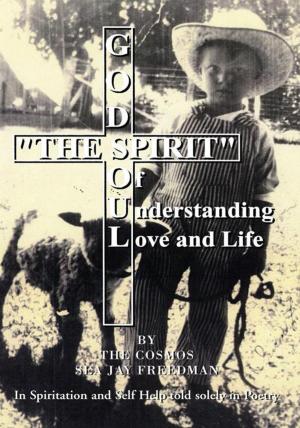| Author: | Alexander Lorincz | ISBN: | 9781311625793 |
| Publisher: | Alexander Lorincz | Publication: | September 1, 2015 |
| Imprint: | Smashwords Edition | Language: | English |
| Author: | Alexander Lorincz |
| ISBN: | 9781311625793 |
| Publisher: | Alexander Lorincz |
| Publication: | September 1, 2015 |
| Imprint: | Smashwords Edition |
| Language: | English |
This collection contains five completed works. Each work is artistically rich and explores an aspect of the inner life. Each work is summarized below.
“Sándor and Shivaswara”
This short story, based on the historical explorer Sándor de Kőrös, tells the tale of his trek to the Orient. The historical de Kőrös traveled to the Indian subcontinent by foot in the 19th century. In this fictional story, his journey ends in Rajasthan, where he meets Shivaswara, a yogi. The journey of Sándor represents the inward journey toward enlightenment. The difficulty of the journey symbolizes how difficult that journey is. Once in Rajasthan, the story takes on an informative style, with Shivaswara teaching Yoga to Sándor.
The Book of Shiva
The longest of the compiled works, The Book of Shiva is a dialogue between the Hindu god Shiva and the sage Vyasa. Divided into sections, each explores an aspect of the spiritual life, or else topics such as art, reincarnation, men and women, wisdom, and symbolism. The Book of Shiva concludes with a vision of remarkable optimism, with the union of Shiva with his celestial spouse, Shakti.
“The Harrowing of Hell”
This brief and poetic work is a retelling of the Eastern Orthodox story of Christ’s descent into hell. In Eastern Christianity, after Jesus dies on the cross he descends into the underworld to free the righteous souls there. He does this in the three days prior to the Resurrection. This work’s goal is to provoke a strong emotional response in the reader. The underworld symbolizes the world and its negative aspects. Christ’s descent symbolizes the violence needed to liberate human beings from the world’s suffering.
“Anastasis”
The word “Anastasis” is the Greek word for “Resurrection.” This otherworldly and mystic poem tells the tale of a spiritual seeker who sinks into the abysses of self-hate, sterility, and death – recalling the lamentations of the Old Testament and the writings of St. John of the Cross. The speaker in this poem sinks to these depths in the imitation of Christ to attain immortality.
“Emily”
This short work is based on Emily, an alienated adolescent girl. In “Emily,” a psychological narrative unfolds. Emily delves into her unconscious and discovers the many illusions she lives in. This is framed in the context of Emily going back to school – simultaneously returning to the source of her memories and going “back to school” about herself. Emily experiences great turmoil when she confronts her past experiences. When her conflict reaches an eclipse, Emily experiences a personal transformation.
This collection contains five completed works. Each work is artistically rich and explores an aspect of the inner life. Each work is summarized below.
“Sándor and Shivaswara”
This short story, based on the historical explorer Sándor de Kőrös, tells the tale of his trek to the Orient. The historical de Kőrös traveled to the Indian subcontinent by foot in the 19th century. In this fictional story, his journey ends in Rajasthan, where he meets Shivaswara, a yogi. The journey of Sándor represents the inward journey toward enlightenment. The difficulty of the journey symbolizes how difficult that journey is. Once in Rajasthan, the story takes on an informative style, with Shivaswara teaching Yoga to Sándor.
The Book of Shiva
The longest of the compiled works, The Book of Shiva is a dialogue between the Hindu god Shiva and the sage Vyasa. Divided into sections, each explores an aspect of the spiritual life, or else topics such as art, reincarnation, men and women, wisdom, and symbolism. The Book of Shiva concludes with a vision of remarkable optimism, with the union of Shiva with his celestial spouse, Shakti.
“The Harrowing of Hell”
This brief and poetic work is a retelling of the Eastern Orthodox story of Christ’s descent into hell. In Eastern Christianity, after Jesus dies on the cross he descends into the underworld to free the righteous souls there. He does this in the three days prior to the Resurrection. This work’s goal is to provoke a strong emotional response in the reader. The underworld symbolizes the world and its negative aspects. Christ’s descent symbolizes the violence needed to liberate human beings from the world’s suffering.
“Anastasis”
The word “Anastasis” is the Greek word for “Resurrection.” This otherworldly and mystic poem tells the tale of a spiritual seeker who sinks into the abysses of self-hate, sterility, and death – recalling the lamentations of the Old Testament and the writings of St. John of the Cross. The speaker in this poem sinks to these depths in the imitation of Christ to attain immortality.
“Emily”
This short work is based on Emily, an alienated adolescent girl. In “Emily,” a psychological narrative unfolds. Emily delves into her unconscious and discovers the many illusions she lives in. This is framed in the context of Emily going back to school – simultaneously returning to the source of her memories and going “back to school” about herself. Emily experiences great turmoil when she confronts her past experiences. When her conflict reaches an eclipse, Emily experiences a personal transformation.















